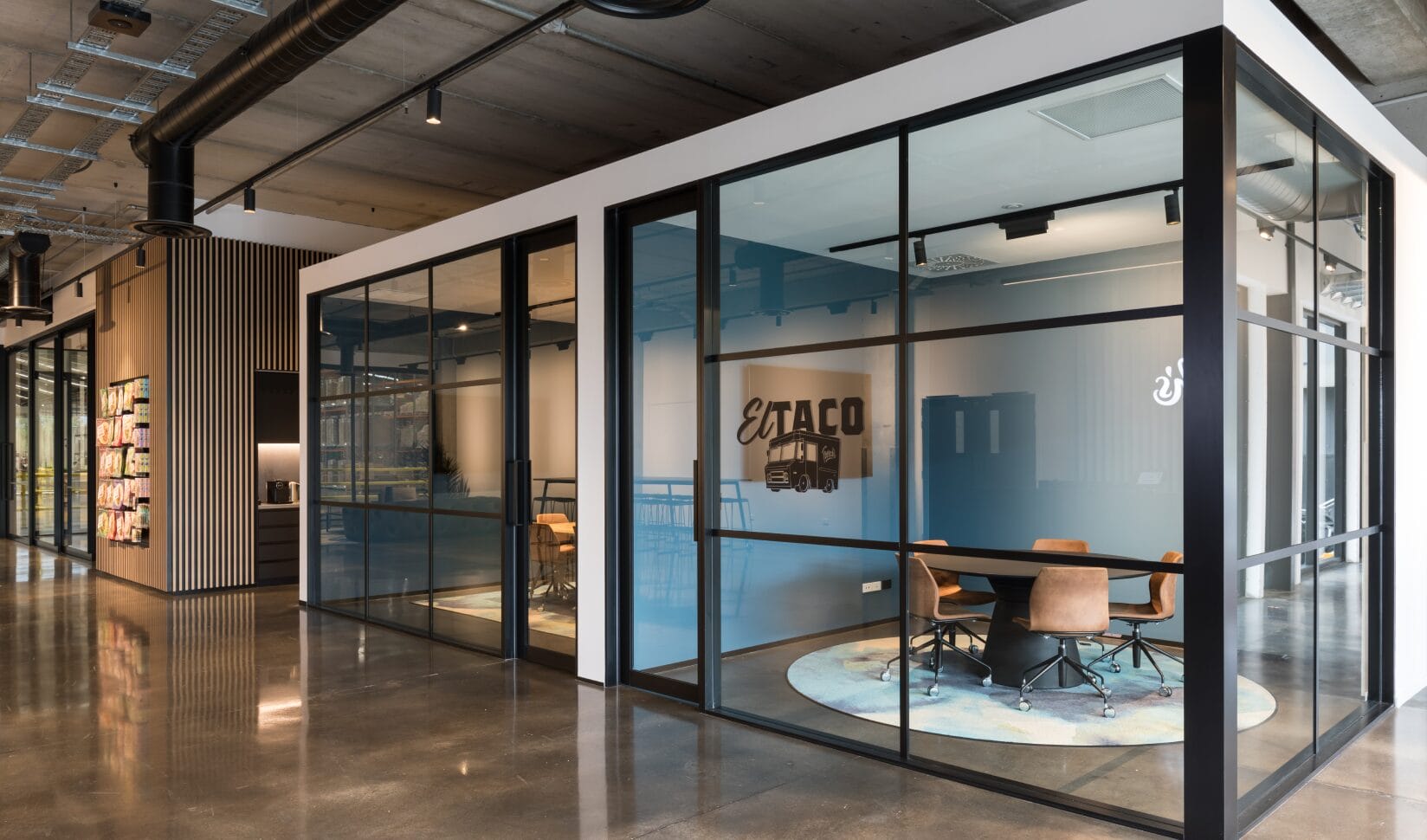

Designing for Tomorrow – The Future of the Office
How to Incorporate Sustainability and Inclusivity into Your Office Design
As we conclude our series on workplace design trends, it’s time to focus on an important area shaping the future of workspaces: sustainability and inclusivity. A well-designed office improves productivity and employee satisfaction. It also plays a significant role in reducing environmental impact and ensuring that spaces are accessible to all.
In this blog post, we will explore:
- The environmental impact of sustainable office design and construction.
- How businesses can integrate sustainable practices into their workplaces.
- The importance of accessibility and inclusivity in modern office environments.
At Spaceworks, we’re committed to helping businesses create spaces that reflect their brand values and prioritise the wellbeing of people and the planet. Our office interior design projects champion sustainability and inclusivity. With 80% of waste and carbon decisions made in boardrooms, the power to drive change is within your grasp. Keep reading to find out how.
Our Key Steps to Sustainable Office Design
Designing with sustainability in mind isn’t about striving for perfection or investing beyond what is financially viable for your business. It’s about making informed choices and implementing improvements where possible.
- Start with Practicality: Focus on efficient solutions rather than striving for a “perfect” space. Thoughtful design supports both sustainability and functionality.
- Choose Low-Carbon Materials: Look for products with take-back schemes to enable recycling or reuse. Selecting sustainable options early prevents them from being overlooked later.
- Understand the Business Case:
- Many businesses face obligations like sustainability-linked loans or stakeholder reporting on environmental impact.
- If your company is committed to reducing its carbon footprint in daily operations, it can’t ignore the design and construction of your office.
- The environmental impact of design and construction is one of the most significant factors in your company’s overall sustainability efforts.
- Reduce Waste in Construction: Use recycled materials and collaborate with suppliers committed to sustainability.
- Sustainable Choices Without Added Costs: Tools like the Spaceworks Carbon Calculator show that businesses can cut carbon emissions by 40% without increasing costs.
Through these steps, businesses can reduce their environmental footprint while creating cost-effective, efficient workspaces.
Creating Sustainable and Inclusive Businesses Through Design
Sustainability is a journey, not a one-off task. Ongoing improvements in design and operations are essential for embedding sustainability into your business culture.
Flexible Workspaces
- A great place to start is by creating flexible and modular spaces that can easily adapt as your business grows or evolves.
- Flexible designs reduce the need for frequent refurbishments and improve employee wellbeing and operational efficiency.
- According to the World Economic Forum, sustainable practices can reduce operational costs by 20% over time.
Sustainable Suppliers and Contractors
- Align with suppliers prioritising sustainability, ethical labour practices, and fair pay.
- Use recyclable or renewable materials to minimise environmental impact.
- Consider suppliers offering take-back schemes to manage waste effectively.
In New Zealand alone, the construction sector sends 17,000 tonnes of waste to landfill every day—a figure that is simply unsustainable. Research by the World Green Building Council shows that businesses embracing a sustainable supply chain for construction can reduce carbon emissions by 25%. These decisions are essential for reducing environmental impact and ensuring cost-efficiency throughout the project.
Practical Tips for Sustainable and Inclusive Workspaces
- Choose Products with Take-Back Schemes: Select materials that can be returned to manufacturers at the end of their life for recycling or reuse, reducing waste and promoting sustainability.
- Evaluate Your Supply Chain: Ensure your suppliers follow best practices around employee care, pay, and sustainable sourcing. This helps reduce your project’s carbon footprint while supporting ethical labour practices. Use the Spaceworks Carbon Calculator to determine the carbon footprint of your fitout projects. It shows that, on average, a 40% reduction in carbon emissions can be achieved without any increase in cost.
- Design for Inclusivity: Incorporate cultural, gender, and LGBTQIA+ considerations into your office design. Ensure accessibility features are in place and create spaces that reflect and respect the diversity of your workforce.
- Sustainability Without a Price Tag: Don’t assume sustainable design has to come at a premium. Many products offer a positive impact on sustainability without increasing your budget. Research and ask suppliers about these options.
Ready to Transform Your Workspace?
At Spaceworks, we understand the importance of creating a work environment that meets functional needs and creates wellbeing and success. Whether you’re looking to implement health-focused designs or find budget-friendly solutions, our team is here to help you transform your workspace into a place where your employees can thrive.
Contact Jana Stringer | Tel: 021 153 3408 | Email: jana@spaceworks.co.nz
Let’s collaborate to design a space that empowers your team and drives success. Get in touch today.





